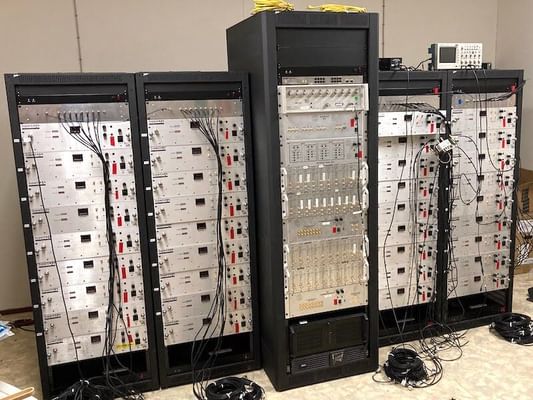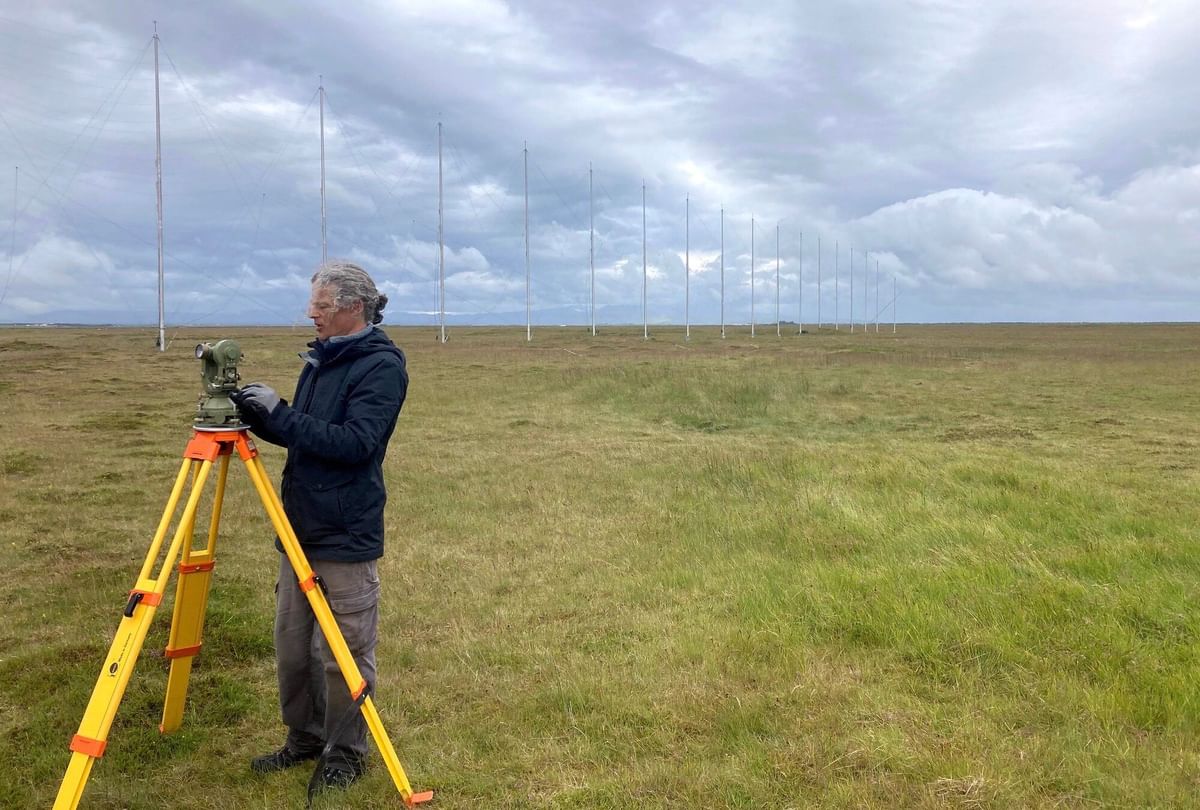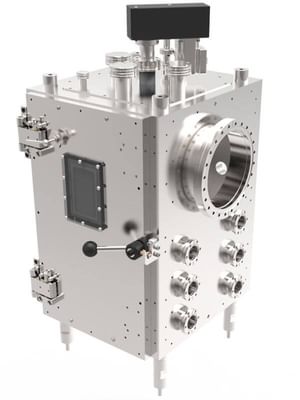- Undergraduate
Bachelor's Degrees
Bachelor of ArtsBachelor of EngineeringDual-Degree ProgramUndergraduate AdmissionsUndergraduate Experience
- Graduate
Graduate Experience
- Research
- Entrepreneurship
- Community
- About
-
Search
All Thayer News



Dartmouth Engineering Researchers Win DoD Funding for Critical Equipment Upgrades
Jan 11, 2024 | by Catha Mayor
Over $800,000 in Department of Defense (DoD) funding was awarded to Dartmouth Engineering through the DoD's Defense University Research Instrumentation Program (DURIP). DURIP supports purchases of major research equipment to augment current and develop new capabilities:
- $588,609 to Professor Simon Shepherd for "SuperDARN Digital Imaging Enhancement to Resolve Smaller Scales and Enable Multi-Mode Operation"
- $223,050 to Professors Jifeng Liu and Geoffroy Hautier for the "Kurt Lesker PVD 75 System for screening and prototyping long carrier lifetime infrared semiconductors"

Receiver electronics (central rack) for the radars in Pykkvibaer, Iceland.
Measuring the Effects of Space Weather
Professor Shepherd and research scientist Evan Thomas operate four scientific radars at two sites—one in Oregon and one in Iceland—that are part of the Super Dual Auroral Radar Network (SuperDARN). SuperDARN is a collection of radars covering polar latitudes to measure the motion of ionized gasses and their response to geomagnetic storms and other phenomena in Earth's upper atmosphere.
"This is fantastic for us," says Shepherd. "Not only for me and Evan, but also for the international SuperDARN community. We are upgrading our radars to a more modern digital system that will give us more capabilities, including an increase in the spatial and temporal resolution of our measurements, potentially producing ten times as much data as our current system."
Finer resolution measurements will help scientists understand more about the physics of space weather and its effects on technological systems such as satellites and electrical grids.
"It's one thing to see that a solar flare has occurred, but it's a complicated process to predict what the effects will be. So, we are essentially replacing all the receiver electronics for our radars, which will allow us to run multiple channels at once. DoD is particularly interested in the effects on high-frequency radio wave communications, but the whole community that uses our data to do science is really excited about this new capability," added Shepherd.
"Also, as part of this grant, we plan to outfit ourselves with a test setup in the lab next door. So, for the first time, we will have the ability not only to develop and test things before we go to the live system, but also to involve our students in the process."

Professor Simon Shepherd checks the theodolite in preparation for aligning the antenna poles of the newest addition to the Super Dual Auroral Radar Network (SuperDARN) in Iceland. (Photo by Nat Alden '23)

The modular process chamber of the Kurt Lesker PVD 75 System.
New Material Discovery
Professors Liu and Hautier are equally excited about their equipment upgrade. Hautier is a computational materials scientist who screens large numbers of new materials to find the most promising ones—theoretically. But these leading candidates then need to be tested.
"Experimental verification is not trivial," says Liu. "This new system is for quick prototyping and screening of the materials predicted by theory. So we can do a quick test to see, does it work? Or if it doesn't work, that's fine too. Then we can go back to the theory and see what we need to correct to get better predictions."
The testing system deposits the materials as thin films and characterizes their properties to see if they match with the theory. So if, for example, someone is searching for a new solar material, they can make a prototype solar cell to quickly know if it's worth pursuing.
"We are exploring a lot of exotic materials which are higher risk, but potentially higher reward," added Liu. "We need something that lets us make mistakes. The kind of system that can accommodate the risk."
For contacts and other media information visit our Media Resources page.
